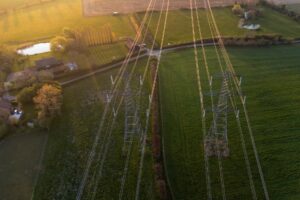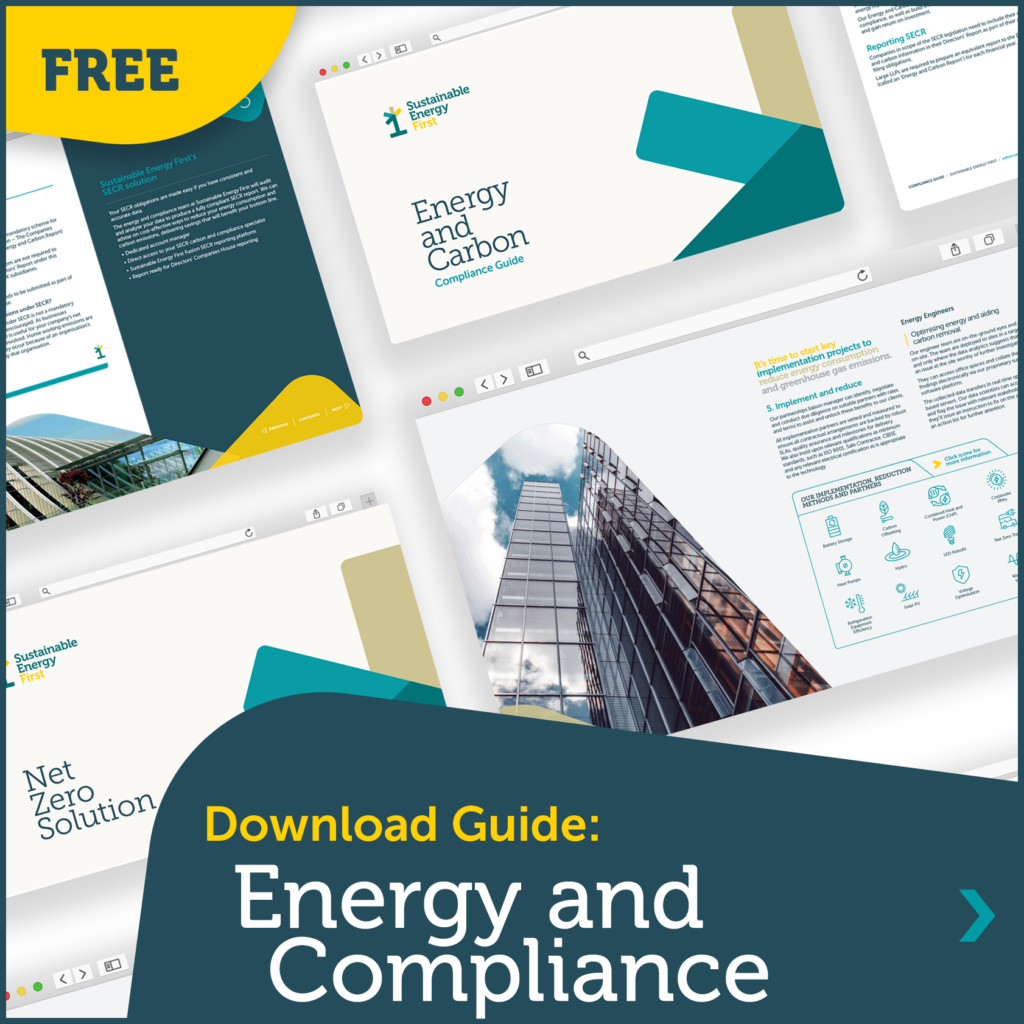
ESOS FAQs
We’ve put together the most frequently asked questions on ESOS, to help you meet compliance.
The UK government’s Energy Savings Opportunity Scheme (ESOS) is currently in Phase 3. The compliance deadline is 5 June 2024, but the Environment Agency is delaying enforcement action on non-compliance. Organisations have until 6 August 2024 to submit their compliance notification, as long as they register their account on the compliance portal by 5 June 2024.
The Energy Savings Opportunity Scheme is a mandatory scheme requiring large UK businesses to report on their energy use and identify possible ways to use less energy. It runs in four-year phases, and we are currently in Phase 3.
Your ESOS obligations depend on the size category of your business as of 31 December 2022. If your organisation qualified as a “large undertaking” on that date, you now have an obligation to comply with ESOS even if the business has subsequently changed in size. For the purposes of ESOS Phase 3, a large undertaking is any UK company that:
If your business is in scope, you must comply with the scheme’s requirements or face possible penalties.
If your organisation qualified for ESOS Phase 2 but does not meet the criteria for Phase 3 on the qualification date, you are advised to submit a DNQ (Do Not Qualify) notification to the Environment Agency. This should be done through the same online portal that you would use for your compliance notification.
The ESOS rules specify that you will need a qualified lead assessor to sign off on your reporting. Their role may be simply reviewing your energy audits, or they may actually carry out the audits for you.
As the compliance deadline draws closer, it will become harder to find a qualified person. So if you don’t have that expertise within your organisation already, now is the time to secure those services. They must be on one of the approved registers for ESOS lead assessors.
The data you use as the basis for ESOS Phase 3 reporting should be based on a 12-month period known as your reference period. Your reference period must end before the ESOS compliance deadline of 5 June 2024, which means the latest it can begin is 6 June 2023. So your organisation should either have finished gathering its data for Phase 3 or be partway through gathering it.
If your organisation was in scope of Phase 2, hopefully you will have established ongoing processes for measuring your energy data and can just continue with this best practice for your Phase 3 data.
(If you prefer to choose an earlier reference period, the earliest date it can begin is 1 January 2022.)
For ESOS Phase 3 purposes you need to calculate all the energy consumed by your business in the UK during the 12-month reference period. That includes transport fuel as well as the energy used for industrial processes, heating and lighting buildings and so on. These should be recorded in a common unit, either an energy unit like kWh or in pounds sterling, and also as energy intensity ratios (see below).
The ESOS rules for Phase 3 allow you to exclude up to 5% of your organisation’s energy consumption by categorising it as “de minimis”. You might choose to leave out a site, a particular activity or usage of a specific fuel. The 95% or more that remains is your “significant energy consumption”. You are under no obligation to use your de minimis exemption. Some organisations may choose to exclude an area where it would be particularly hard or expensive to cut consumption. But others will find it more straightforward just to report their total, which they will already have calculated anyway.
The strengthened Phase 3 rules require your business to include energy intensity ratios in its ESOS reporting. This means that as well as recording energy use in kWh or money spent, you also need to put energy use in the following contexts:
When your ESOS reference period is complete and you have all the data, you can proceed with your audit report. This should analyse your organisation’s energy consumption and how energy-efficient it is. It should recommend possible ways in which your organisation can become more energy-efficient and give the costs and benefits of these measures.
As well as getting sign-off from the lead assessor, you will need to get your report reviewed and signed off by one of more board-level directors of your organisation.
Your ESOS audit will include a number of suggestions for energy-saving measures that your organisation can implement. Once the audit is complete, Phase 3 requires you to use it as the basis for an energy-saving action plan. Which measures will your organisation be committing to? The plan should include:
The deadline to submit your plan is 5 December 2024, six months after the ESOS compliance deadline.
The long-awaited IT system – called “Manage your Energy Savings Opportunity Scheme’ (MESOS) goes live on Tuesday 19th March. Participants can register their Phase 3 user and organisational accounts from this date.
From the second half of April 2024, participants will be able to submit notification of compliance (exact date to be confirmed).
Delays in finalising the ESOS Phase 3 guidance and compliance portal have caused concern among stakeholders regarding the tight timeframe for meeting the 5th June 2024 deadline. In response to this, the EA has offered an “enforcement extension period”.
While the 5th June deadline remains, enforcement action won’t be taken against non-compliant organisations, provided they meet two conditions:
– Registration on the new compliance portal has been completed by the 5 June 2024
– Organisations submit their notification of compliance by 6th August 2024.
The Energy Advice Hub regularly updates the ESOS FAQs and will be reporting any changes to the scheme in Phase 3 and beyond, so keep an eye on the site to stay informed.






We’ve put together the most frequently asked questions on ESOS, to help you meet compliance.

